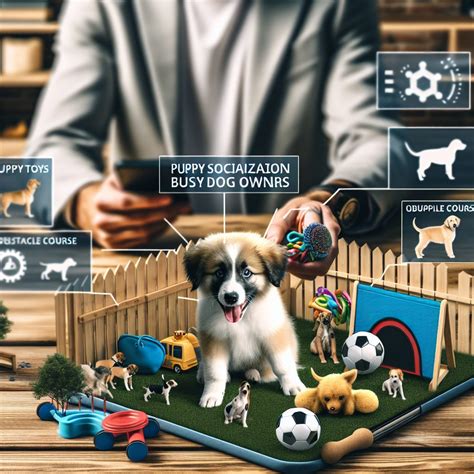Why Pet Socialization and Training Matters
Proper socialization and training are crucial for the well-being and safety of both pets and their owners. According to the American Society for the Prevention of Cruelty to Animals (ASPCA), approximately 6.5 million companion animals enter U.S. animal shelters nationwide every year, and many of them are euthanized due to behavioral problems.

Benefits of Socializing and Training Your Pet
- Reduced risk of aggression towards people and other animals
- Improved obedience and leash manners
- Enhanced mental and emotional health
- Stronger bond between pet and owner
- Increased safety and well-being for both pet and owner
Transitioning from Theory to Practice: 5 Essential Tips
1. Start Early: The Importance of Puppy and Kitten Kindergarten
The first 16 weeks of a pet’s life are critical for socialization. Enroll your puppy or kitten in obedience classes designed specifically for young animals. These classes provide a safe and supervised environment for pets to interact with people, other animals, and various objects.
2. Gradual Exposure to New Environments
Gradually expose your pet to different environments, such as parks, pet stores, and animal shelters. Keep these initial exposures short and positive, allowing your pet to acclimate at their own pace.
3. Positive Reinforcement: Rewarding Good Behavior
Reward your pet with treats, praise, or play when they exhibit desired behaviors. Avoid punishment, as it can damage the bond between you and your pet and hinder their learning process.
4. Patience and Consistency: The Key to Success
Training and socialization take time and effort. Be patient and consistent, following through with training exercises regularly. Remember that setbacks are normal, and don’t get discouraged.
5. Professional Assistance When Needed
If you encounter challenges or have specific concerns about your pet’s behavior, consult with a qualified veterinarian or certified animal behaviorist. They can provide personalized guidance and support.
Common Mistakes to Avoid
- Overwhelming your pet with too much stimulation or exposure too quickly.
- Ignoring or tolerating inappropriate behaviors.
- Resorting to punishment, which can damage the pet’s trust and increase fear.
- Neglecting ongoing training and socialization throughout your pet’s life.
Case Study: The Transformative Power of Socialization and Training
“Coco,” a rescued pit bull, was a shy and aggressive dog when she entered her new foster home. Through patient socialization and training, Coco blossomed into a loving and social companion. She now enjoys playing with other dogs, interacting with strangers, and taking family walks. Coco’s transformation is a testament to the remarkable impact that proper socialization and training can have on even the most challenging pets.
Table 1: Essential Pet Supplies for Training and Socialization
| Item | Purpose |
|---|---|
| High-quality treats | Reward positive behavior |
| Leash and collar | Control and guidance |
| Harness | Support and comfort during training |
| Puzzle toys | Mental stimulation and boredom prevention |
| Playpen | Safe and contained environment for puppies and kittens |
Table 2: Recommended Socialization Activities for Pets
| Activity | Benefits |
|---|---|
| Park visits | Exposure to different people, animals, and scents |
| Pet playdates | Opportunities for controlled interactions with other pets |
| Group training classes | Structured learning in a social setting |
| Visits to animal shelters | Positive experiences around other animals |
| Exploring new environments | Broadening horizons and reducing fear |
Table 3: Key Milestones in Pet Socialization
| Age | Activity |
|---|---|
| 2-4 weeks | Begin handling and introducing new objects |
| 6-12 weeks | Exposure to other people and animals in controlled settings |
| 12-16 weeks | Puppy and kitten kindergarten classes |
| 3-6 months | Gradual introduction to more complex environments and situations |
| 6+ months | Ongoing socialization and training as needed |
Table 4: Essential Training Commands for Pets
| Command | Purpose |
|---|---|
| Sit | Basic obedience and control |
| Stay | Maintain position and prevent impulse behaviors |
| Come | Return to owner on command |
| Heel | Walk beside owner without pulling |
| Leave it | Drop or avoid objects on command |
| Down | Lie down on command |





















